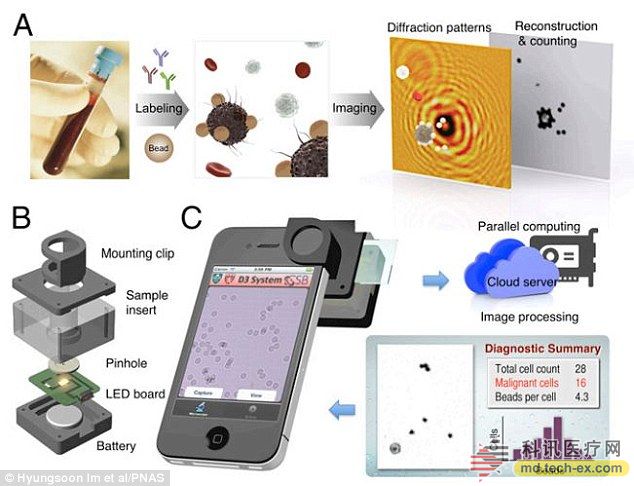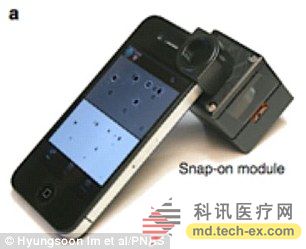Release date: 2015-04-20

The iPhone camera will be able to detect cancer in a few minutes to save people's lives. Scientists have developed devices that can be stuck on smartphones and will eventually be available at home.
Their devices can use the powerful camera combination of most smartphones to combine cancer cells with microbeads to diagnose cancer.

When tissue and blood samples are added to the device, the beads can bind to the cancer cells in the sample while causing light to pass through the device. Using the mobile app, these images are sent to the computer analysis center and the results are sent back to the phone within 45 minutes.
Scientists at the Massachusetts General Hospital and Harvard Medical School who develop equipment say the device can return results in two minutes at the earliest.

They have tested the device with cervical cancer tissue samples obtained from smear testing. They call the system a digital diffraction diagnostic or D3, which can also be used for screening other types of cancer, and they have begun testing for lymphoma.
Ralph Weissleder, a professor of systems biology at Harvard Medical School who led the study, said equipment can even be used for the diagnosis of infectious diseases such as HIV, TB and Ebola.
The beads used in the device are special targeting molecules that bind to sites on the surface of cancer cells.

Disease cells often make molecules that are distinct from healthy tissue and can therefore be detected by antibodies. By combining the microbeads with these specific antibodies, the microbeads of the device can bind to these molecules, that is, they will accumulate around the cancer cells of the tissue or blood sample.
Biopsy tissue samples or fingertip blood samples are mixed with their labeled beads and placed on a slide. Then place it on the mold that is snapped onto the phone camera. The LED on the back of the mold illuminates the sample on the slide and the image is captured by the camera of the phone. Researchers are now testing the device with the iPhone 4S.
After gathering around the cells, the microbeads are scattered into a unique diffraction pattern by the path of the sample light. Central diffraction can detect these diffraction patterns.

Researchers say the cost of the device is about $1.8 per test. They used the device to test 25 women's smears, indicating that they had cervical cancer. They also use equipment to detect human papillomavirus infection.
They found that their test results were more than 92% accurate compared to the gold standard.
Professor Weissleder said that smartphones can spread the method to the world, especially in remote areas.
Source: Kexun Medical Network
APP control Hearing aids,APP control Hearing Earbuds,APP control Hearing earphones
Shenzhen Sunshine Technology Co.,Ltd , https://www.shenzhenyatwin.com